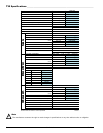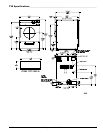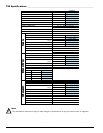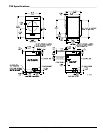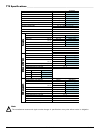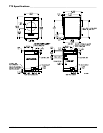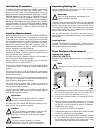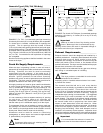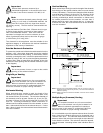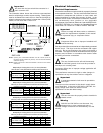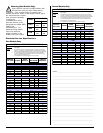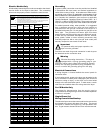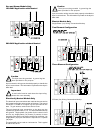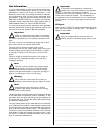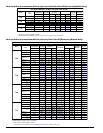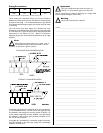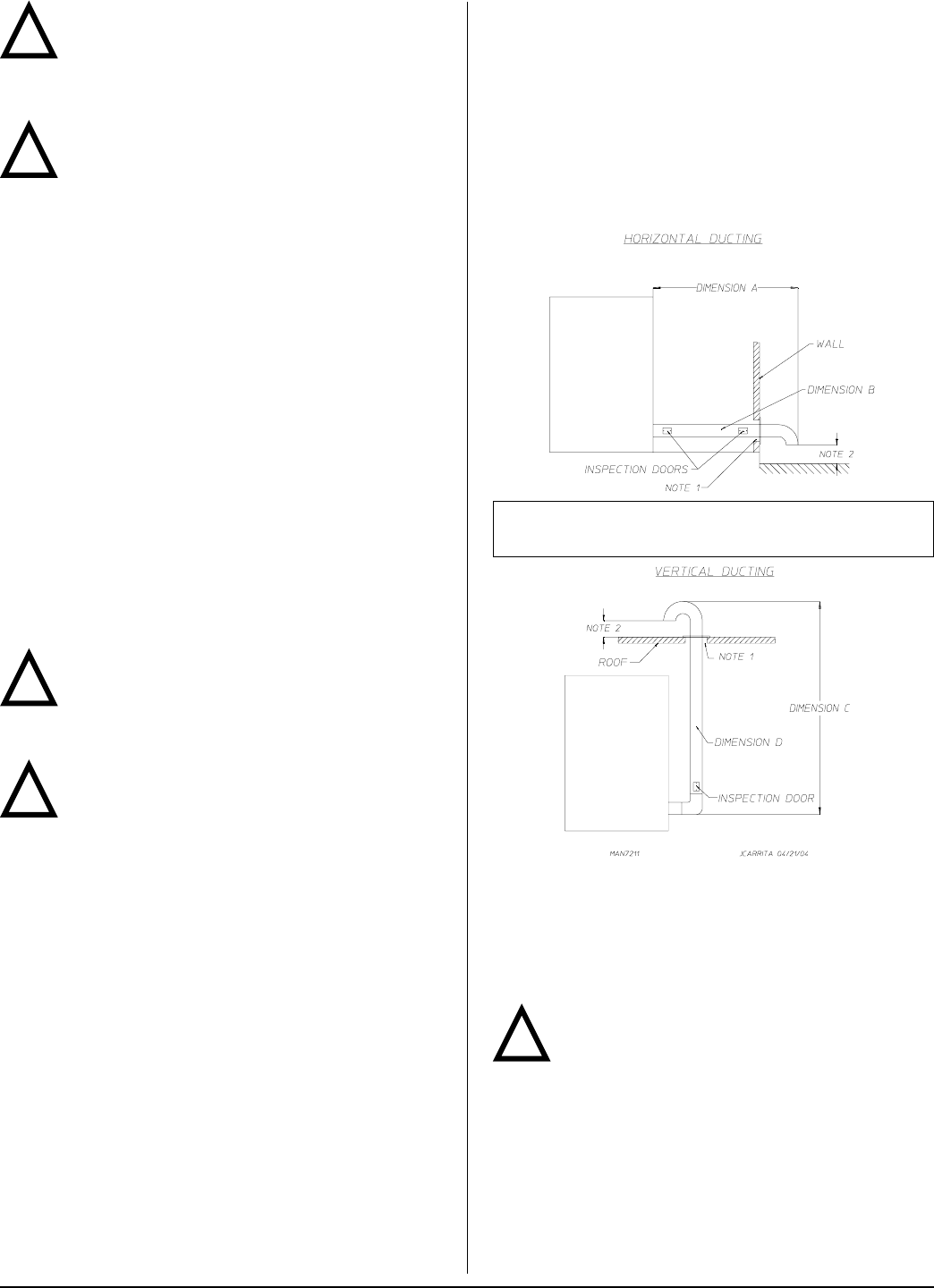
16 JLA Limited 113429-9
!
NOTE 1 Opening from combustible materials must be 2-inches (5.08 cm)
larger than the duct (all the way around). The duct must be centered
within this opening.
NOTE 2 Distance should be 2 times the diameter of the duct to the nearest
obstruction.
Multiple Dryer (Common) Venting
Important
For extended ductwork runs, the cross-sectional
area of the ductwork can only be increased to an
extent. When the ductwork approaches the maximum
limits as noted in this manual, a professional HVAC firm
should be consulted for proper venting information.
If it is not feasible to provide separate exhaust ducts for each
dryer, ducts from individual dryers may be channeled into a
“common main duct.” The individual ducts should enter the
bottom or side of the main duct at an angle not more than 45º
in the direction of airflow. The main duct should be tapered,
with the diameter increasing before each individual duct is
added.
A = 20 feet (6.10 meters)
B = T20 – 4-inches (10.16 cm)
T30 – 6-inches (15.24 cm)
T50, T75 – 8-inches (20.32 cm)
!
C = 12 feet (3.66 meters)
D = T20 – 4-inches (10.16 cm)
T30 – 6-inches (15.24 cm)
T50, T75 – 8-inches (20.32 cm)
!
Important
Exhaust back pressure measured by a
manometer/magnehelic in the exhaust duct must
be no less than 0 and must not exceed 0.6 in WC (1.48
mb).
Note
When the exhaust ductwork passes through a wall,
ceiling, or roof made of combustible materials, the
opening must be 2-inches (5.08 cm) larger than the duct
(all the way around). The duct must be centered within this
opening.
As per the National Fuel Gas Code, “Exhaust ducts for type
2 clothes dryers shall be constructed of sheet metal or
other noncombustible material. Such ducts shall be
equivalent in strength and corrosion resistance to ducts
made of galvanized sheet steel not less than 26 gauge
(0.0195-inches [0.50 mm]) thick.”
The ductwork for this appliance must be suitable for the
appliance category in accordance with national installation
regulations of the country of destination.
Outside Ductwork Protection
To protect the outside end of the horizontal ductwork from the
weather, a 90° elbow bent downward should be installed
where the exhaust exits the building. If the ductwork travels
vertically up through the roof, it should be protected from the
weather by using a 180° turn to point the opening downward.
In either case, allow at least twice the diameter of the duct
between the duct opening and the nearest obstruction (refer
to the diagram).
Important
Do not use screens, louvers, or caps on the outside
opening of the exhaust ductwork.
Single Dryer Venting
Important
For extended ductwork runs, the cross-sectional
area of the ductwork can only be increased to an
extent. When the ductwork approaches the maximum
limits as noted in this manual, a professional HVAC firm
should be consulted for proper venting information.
Horizontal Venting
When horizontal dryer venting is used, the length of the
ductwork from the dryer to the outside exhaust outlet, must
not exceed 20 feet (6.10 meters). The minimum diameter of
this ductwork must be at least 4-inches (10.16 cm) for T20,
6-inches (15.24 cm) for T30, and 8-inches (20.32 cm) for T50
and T75. Including tumbler/dryer elbow connections or
elbows used for outside protection from the weather, no more
than 1 elbow should be used in the exhaust duct run. If more
than 1 elbow is used, the cross-sectional area of the ductwork
must be increased.
!
Vertical Venting
When vertical dryer venting is used, the length of the ductwork
from the dryer to the outside exhaust outlet, must not exceed
12 feet (3.66 meters). The minimum diameter of this ductwork
must be at least 4-inches (10.16 cm) for T20, 6-inches (15.24
cm) for T30, and 8-inches (20.32 cm) for T50 and T75.
Including tumbler/dryer elbow connections or elbows used
for outside protection from the weather, no more than 3
elbows should be used in the exhaust duct run. If more than
3 elbows are used, the cross-sectional area of the ductwork
must be increased.
!



